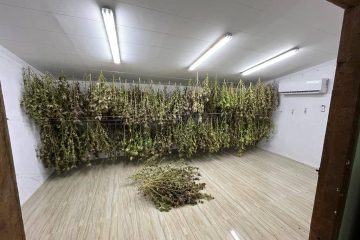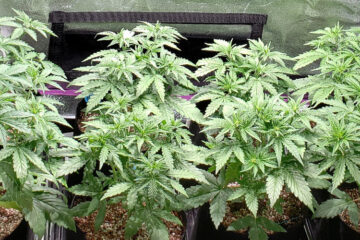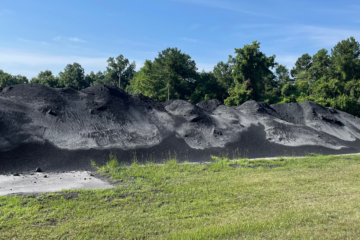
Let the roots absorb the nutrients you put into the soil. If the plants ever run into trouble caused by pests or diseases, the most probable solution is to apply a mist of natural treatment. It can be difficult choosing the best ways to keep pests away from your cannabis plants as there are quite a lot of methods, however, there is one you may not have heard of.
How about foliar spraying nutrients to feed the plants? No, you have never heard of it? Well, that is what we are going to talk about in this article.
Why Would You Foliar Feed Marijuana Plants?
Foliar feeding the plants is an excellent way of remedying a nutrient deficiency. By spraying directly on the leaves, your plants could quickly absorb the sustenance and promptly recover.
Marijuana plants need 17 different kinds of nutrients. Some of these – macronutrients such as nitrogen, phosphorus, and potassium – are required in higher quantities. Others – micronutrients such as iron and copper – are needed only in trace amounts.
The extensive root system grown by the plants not only keeps them upright. They also come into contact with nutrients, moisture, and oxygen as they stretch longer and outward. On the surface, the plants release vapor into the air through leaf transpiration, creating a vacuum within. This negative pressure creates a suction effect in which sustenance is absorbed through the roots and then transported to the leaves.
Your plants also need carbon dioxide, which is essential to the photosynthetic process. They do this by opening the stomata on the leaves and breathing in CO2 molecules.
You can take advantage of the openings by spraying directly and letting the leaves “breathe in” the nutrients. The cuticle is another means in which the plants could absorb nutrients. This waxy layer, found on the surface of leaves, stops water loss. Once the nutrients penetrate this protective coating, they can penetrate the cell wall and cell membrane.
What Are The Advantages Of Foliar Feeding Cannabis Plants?
Foliar feeding is by no means intended to replace the functions of root systems. Instead, you could think of it as supplementing the plants. Once you have identified the particular nutrient (usually calcium and magnesium) your plant lacks, you could spray it directly onto the leaves. As explained in the previous section, the plants could absorb them through the stomata and cuticles.
The signs of nutrient deficiencies range from discoloration to wilting of leaves. In severe cases, the affected plant may die. In most cases, though, you would have time to rectify the situation, spraying the required nutrient directly on the affected parts. In more ways than one, foliar feeding is a more effective remedy than mixing into the substrate. Fear not, we have a great guide on how to avoid nutrient deficiencies which details all the techniques and solutions you can use.
Foliar feeding the plants is also an excellent way to boost their growth. Do this minimally with the intent to “fill in the gaps” – ensuring there is enough of all the minerals needed. You can do this during the vegetative stage until the first couple of weeks of the flowering period. Do not go beyond that, so you do not increase nutrient residues during harvest.
There are also other minor benefits.
Nutrient uptake through foliage leads to the plants providing more carbohydrates in the root zone. That is more food for beneficial microbes, which aids the roots in carrying out its functions.
By augmenting the uptake on the leaves and a little less in the root zone, you would lower the chances of nutrient buildup in the soil. This is one less problem you have to deal with – the accumulation of minerals and salts.
Are There Any Disadvantages To Foliar Feeding Cannabis Plants?
About the only reason why there would be a downside to foliar feeding is when you view it as the final solution. Keep in mind that it is only a temporary fix. You still need to identify the root cause – such as pH or root disease – and fix that.
How Do You Foliar Feed Your Marijuana Plants?
There are three things you need: personal protection, nutrient mix, and a mist-style sprayer. You only need to prepare half-strength nutrients at most and spray on the plants. It is that easy. However, there are other considerations. Do it correctly, and you have everything to gain. A mistake, on the other hand, could have fatal consequences.
Do Not Do This!!
Never spray when lights are turned on, or During Sun.
You are supposed to spray a fine mist over the plants. Even so, droplets will form and act as a lens that amplifies heat, resulting in burns. Moreover, as the temp increases, the leaf stomata should open up to release gas and moisture to cool down. It cannot do that efficiently due to the nutrient film coating and thus lead to choking.
Watch the humidity level. Spraying a fine mist onto the plants will, for sure, increase the humidity level. That is okay during the vegetative period. During the mid to late flowering stages, the plants would need a high moisture level. Foliar feeding could raise it to an excessive degree, causing problems.
Excessive nutrients. Generally, you want to prepare half-strength nutrients. The younger the plants are, though, you would have to further increase the dilution. For seedlings, start with 20% and slowly increase the nutrients as the plants grow.
You Should Definitely Do This!!
Spray when the lights are out. It takes around 15 minutes for the plants to settle into the darkness after turning off the lamps. It is during this period when the stems and the leaves have the highest absorption rates. This period is when you should be foliar feeding the plants.
Use a high-quality sprayer. You want to spray a fine mist, but that is only half of what is needed. Get a sprayer that works even when upside down. You are supposed to apply a thin coat on the topside and on the leaves’ underside. Make sure none of the leaves are dripping wet – that is excessive.
Rectify nutrient deficiency. If your plants do lack some nutrients, it would most likely be calcium and magnesium. Apply every five days after turning off the light to fix the issue. Usually, not all plants are affected. As you can see, foliar feeding lets you nurture a sick plant back to health without disrupting the other plants’ feeding schedule.
Maximize foliar feeding benefits. There are numerous choices of liquid foliar nutrient feeds. Some formulations encourage the growth of more branches, thereby reducing internode spacing. Others increase the number of bud sites or promote better health by preventing deficiencies and warding off pests and pathogens.
Foliar Feed? You Bet!
Your plants can absorb nutrients through their leaves up to 20x faster than they could with roots. That does not mean you foliar feed them exclusively. The only reason you should do so is to rectify a nutrient deficiency problem or boost their growth during the vegetative stage.
Feeding through foliar is not at all challenging. You do have to be aware of the concentration and the best time to spray the plants. As you are now aware of the advantages, all you have to do is follow the recommended tips while avoiding the wrong practices. You will soon see for yourself just how effective this practice is and the benefits it gives you and your plants.



0 Comments